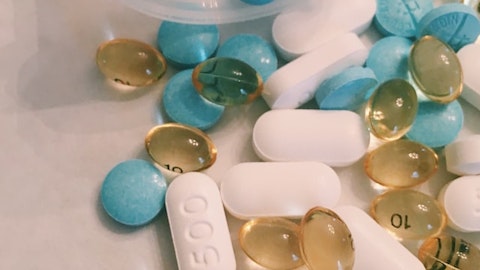Daniel O’Connell: And I think – and Tom, just to copy, we are doing amyloid that in the current study and would anticipate doing it. Again, not that we would expect to see it move dramatically, but just as a kind of the conventional standard practice.
Tom Shrader: Okay, great. Thanks for the answer.
Operator: Please stand by for our next question. Our next question comes from Colin Bristow with UBS. Your line is now open.
Unidentified Analyst: Morning, everyone. This is Kean on for Colin. Thanks for taking our questions. So we have two questions and a follow-up if we may do. The first question is for patients in the Cohort 6 in MAD. In our last correspondence, you noted they have not yet received MRI scans. Just wondering if they have received by now? And if so, could you provide any safety update? And then second question is more general. Do you think there’s a general correlation to dose a oligomer targeted antibody more frequently than those core plaque targeted ones, given the faster turnover kinetics here? Thank you.
Daniel O’Connell: Hi. Thanks for your question. I think on the first one, as I mentioned, and as Eric mentioned, we’ve disclosed the RA cases back in February in conjunction with the protocol amendment. We – and Eric just noted the Cohort 6 continues to proceed per protocol. So we haven’t provided any other information in terms of ARIA-E cases and so forth. I think maybe I would turn it to Eric in terms of the dosing frequency question with respect to oligomer antibody. I mean I think – yes, Eric, maybe you would care to comment on that aspect of Kean’s question.
Eric Siemers: Yes. So it’s a really interesting question. And I think what you’re really asking is that for an antibody that targets plaque, the antibody binds to the plaque. It actually starts an inflammatory response with microglia. And so it’s not necessarily so dependent on the PK that you would see even in spinal fluid at any given time since once it’s found a plaque, it’s obviously not going to show up in spinal fluid. In our case, and maybe a little bit more straightforward in that we do want to show that we’re in antibody excess. In other words, that you have more antibody there than you have oligomers. And that was one of the reasons why the preliminary data, CSF PK data in the Cohort 3, which is 25 mgs per kg, really was so exciting for us is that we were an antibody excess. And so the situation is a little bit different. You’re right. But I think in our case, again, I think the important thing is to show that we’re in antibody excess.
Unidentified Analyst: Thank you much Yes, sorry, yes. Sorry, thank you for providing all the colors, really helpful. We have a follow-up question, which kind of like earlier question, also what Dan has mentioned in the prepared remarks on A4. So we understood solanezumab is primarily – sorry, primarily monomer targeting, but it has some capacity to oligomers, although it does not touch any plaque. So there were some concerns following solanezumab completely failure is that maybe some level of plaque clearance are still needed for the best treatment efficacy. We are curious to hear yourselves. And if you could provide any color to us will be greatly appreciated. Thank you so much.
Eric Siemers: Well, Dan, do you want me to go ahead and take that since I have a bit of familiarity with solanezumab. First of all, for the A4 result, of course, there’s really just been press releases and we’ll need to see all the data. What for me was a bit surprising and interesting is that actually, even though there were no statistical differences, the trends actually favored placebo over drug. And that was at a dose of 1,600 milligrams every 4 weeks. Well, when solanezumab was given to people with mild Alzheimer’s disease at 400 milligrams every 4 weeks. The trends were very consistent in terms of favoring drug. So why you didn’t see that with the higher dose of solanezumab is a bit of a mystery, and I think we’ll have to see all the data to understand that.
But again, our thesis has always been that if you want to target plaque, you really have to get rid of it and certainly gantenerumab and also going all the way back to bevacizumab has taught the field that a little bit of plaque reduction doesn’t really get you anywhere. So I don’t think that you could approach this as saying, well, let’s target monomers and then we need a little bit of plaque reduction. I think that probably would not end up being successful.
Unidentified Analyst: And Eric, to your – just to clarify, do you have – are you aware of any oligomer binding properties for solanezumab. I mean it’s almost a pure monomer targeting antibodies my understanding?
Eric Siemers: Well, and that’s always been my – now you can always find publications where somebody shows a little binding to this sort of add. And typically, those are in – in vitro studies and so they’re kind of artificial conditions. But all the data that I’m aware of has really been quite consistent that actually solanezumab is remarkably specific for monomers.
Daniel O’Connell: And really 193 has been developed to principally target oligomers and not have much interactions with modern Acumen
Unidentified Analyst: Understood. Thank you so much.


